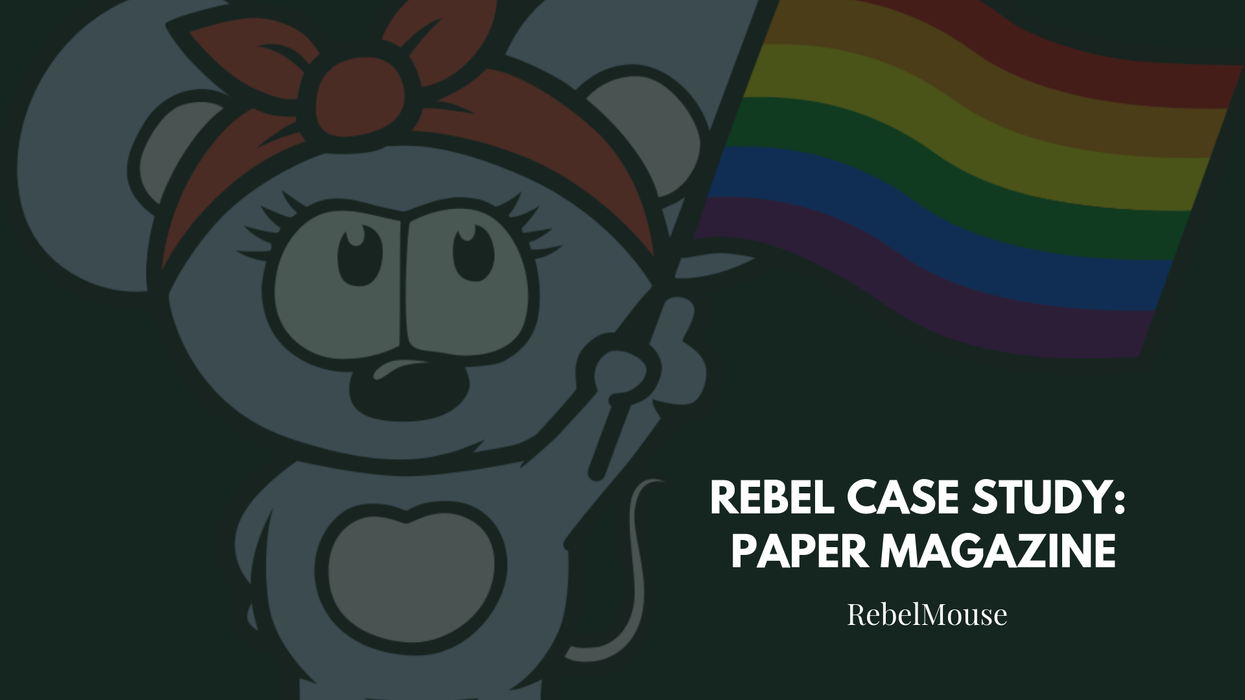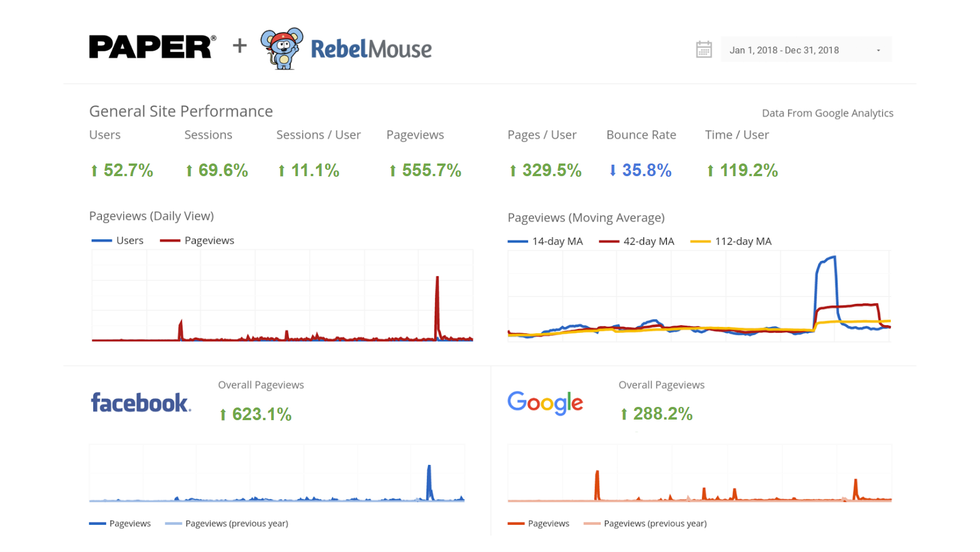PAPER Magazine has been on our platform for four years, and saw another record year again in 2018. In one single day, they did 21M pageviews alone. Although that day dwarfs other aspects of these particular charts, they had continuous organic growth and premium campaigns with major brands.
Rebel Case Study: PAPER Magazine

By Anne BurnsAug 23, 2023
Anne Burns
Director of Marketing
Branding specialist with over ten years of experience in integrated marketing strategies, digital and social content, search engine optimization, and online advertising. I have led efforts to bring newsrooms, small businesses, and legacy brands into a digital presence that’s true to brand, profitable, and personalized.

